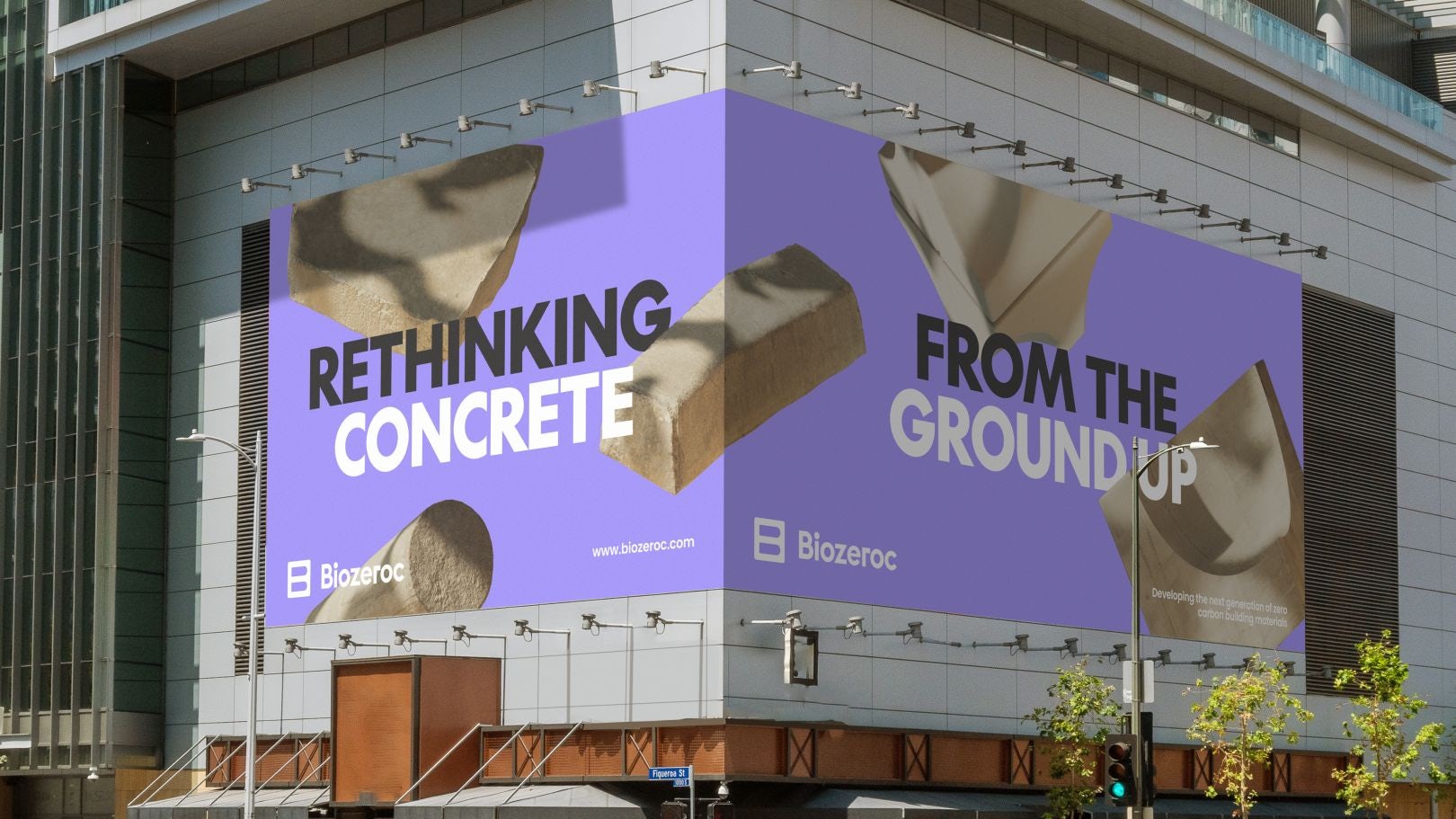Why do ‘boring’ companies suddenly care about branding?
After an influx of compelling design from unexpected sectors, we ask why it’s happening, if it’s really going to make CEOs happy, and discuss the lessons still to learn from the corporate identities of yesteryear
Concrete, cleaning, insurance … they’re not the names you’d put on a list of the most exciting and innovative businesses in the world. They’re also not the sectors you’d expect to invest in excellent design and branding, and yet we’re in a world where steel companies commission custom typefaces, solar power providers build slick digital platforms, and insurance companies make advertising that actually raises a smile.
Cleancult is rethinking what cleaning products look like, Biozeroc is exploring how branding can spread the word about carbon-neutral construction materials, and Cabinet Health is promoting refillable medicine with a visual identity that’s a radical voice in an industry almost uniformly oblivious to good design. It’s worth looking at what the investors are doing as well, with many venture capital firms also embracing design; for example, Thrive Capital’s spinning logo and mysterious website.
“We had a rush on vet brands last year,” says O Street co-founder David Freer, “a client and industry we had not encountered before. We must have done about four different brands…. In general terms, what makes these unexpected services investing in design surprising is that it suggests people are putting more value on design. They realise that investing in design gives them an edge over their competitors.”
The average CR reader is probably rolling their eyes right now; of course branding makes a difference. To their credit, plenty of ordinary companies have pootled along for decades doing just fine without looking too polished. But for many of them, there’s a realisation that people expect more. For Blank founder Nikita Walia, some of that is to do with the relationship people have with brands now.
“I think that many of the hallmarks of growing up – owning property, marriage, even designer goods – fall out of reach for most,” she explains. “Buying a chic cleaning product feels like owning a piece of that ‘thing’, and brands are over-indexing on catering to that desire. I mean, just look at the rise of dupe culture, counterfeit livestreams etc. We live in a culture that is aesthetics driven. It’s only natural that looks can trump form.”
Brands won’t get away with bad logos or poor general design because other brands in their space will be doing design well
There’s also a much greater level of brand literacy in general. Companies shouldn’t underestimate the fact that people are deeply immersed in online platforms such as TikTok, YouTube and Instagram, meaning more of us are exposed to more design than ever before.
“People are a lot more visually sophisticated,” Freer tells CR. “And brands won’t get away with bad logos or poor general design because other brands in their space will be doing design well, and in doing so will attract more customers.”

But, whispers the CEO, will it? Is spending £100k+ on a rebrand going to sell more products? Is it going to steal market share from your biggest competitor? That depends, says Freer, who points out that any amount of half-assing will tank the possible benefits.
“Not investing enough and getting bad design could keep your product or service as irrelevant looking as it was to begin with, which would be a false economy,” he explains. “Good design should work in every context. It’s bad or lazy design that will get us all into trouble – like a budget supermarket copying the art direction style of Apple photography for cans of baked beans.”
Bravery is a difficult thing to acquire because it starts at the relationship between company and agency. It requires vulnerability and trust from both sides
And for it to work, it has to be real, say Margaret Kerr-Jarrett and Emunah Winer, founders of branding agency Nihilo. Investing in design because you’ve read that it equals more sales is not the way to go. Good branding, for any business, is thorough, conceptually strong, well executed, and relevant to the subject matter – it has to reflect and amplify who a company truly is.
“It’s nice when your logistics provider/napkin company/dog waste collector bag cares enough to give some polish to their identity, but this alone doesn’t equate to real bravery or a true understanding of how design can actually impact a business’s success,” says Kerr-Jarrett. “Bravery is a difficult thing to acquire because it starts at the relationship between company and agency. It requires vulnerability and trust from both sides.”

And according to Walia, it’s also entirely possible to overdo it, and brand yourself at a level that alienates people. “Balancing aesthetics and utility is paramount,” she says. “If you’re only designing for a handful of people who work at design studios in Brooklyn, you’re not necessarily meeting the brief – unless that is the customer.
“There is a certain person for whom a nicely branded can of beans or a fancier glass cleaning spray will move the needle,” she adds. “And for another, that is price or utility conscious above all, it may not. It all depends on who you’re going for.”
So how do brands walk this precarious tightrope? Some of the answers lie in the mists of time – a place that’s entirely different from today, but also somehow exactly the same. Dive into the Logo Histories archive and you can soak up the vintage corporate identities that designers love to fetishise. Who are they for? Oil companies, home appliances, educational publishers, business expos, an aluminium company … sounds familiar, right? So why does it feel so surprising to see companies in similarly workaday sectors spending money on branding today?

According to Nihilo, it’s because branding has shifted from a utilitarian definition to a decorative one. These big, historic corporate identities are iconic because “they were created to work”. “They were smart solutions to a problem,” says Winer. “Today we try to replicate style without thinking of why that style came to be, or whether it’s actually relevant to what we’re creating. Does it simply look good, or does it work? This is where we may have pushed it too far as an industry. We’ve defined branding as ‘looking cool’ as opposed to ‘being effective’.”
The good news, says Kerr-Jarrett, is that as more companies understand the importance of investing in design, they’re also grasping that branding is more than looking appealing. We’ve had the era of design for design’s sake, followed by its hideous offspring, blanding, and now we’re on the cusp of a new appreciation of utility and craftsmanship coming together.
“We do think that audiences appreciate that – in the same way they appreciate good music or good art,” she adds. “Humans are wired to connect with authenticity and skill.” And that’s true whether you’re forging steel, manufacturing poo bags or selling car insurance; branding – done carefully and successfully – could well be the last competitive advantage these companies have.




